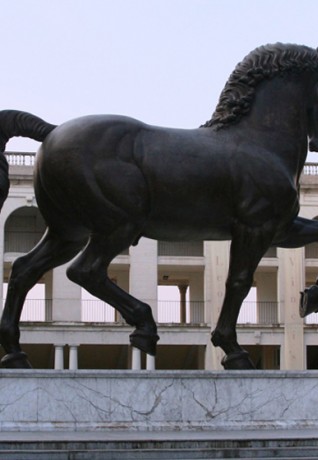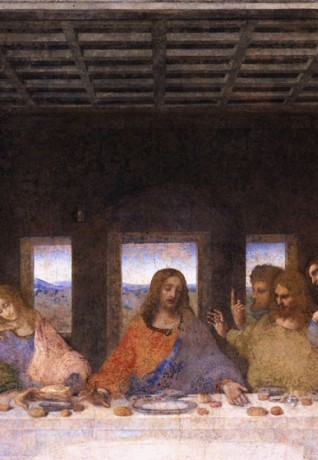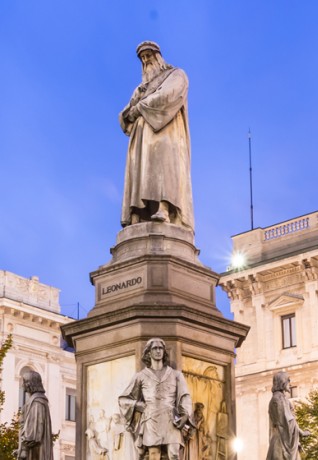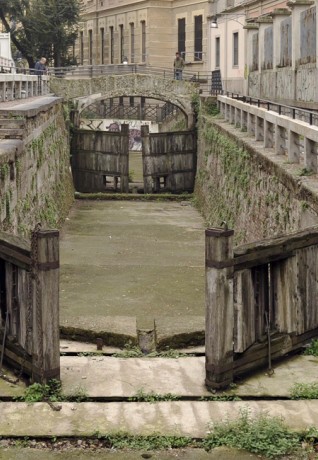The world in a codex
Pinacoteca Ambrosiana: Portrait of a Musician / Biblioteca Ambrosiana: Codex Atlanticus
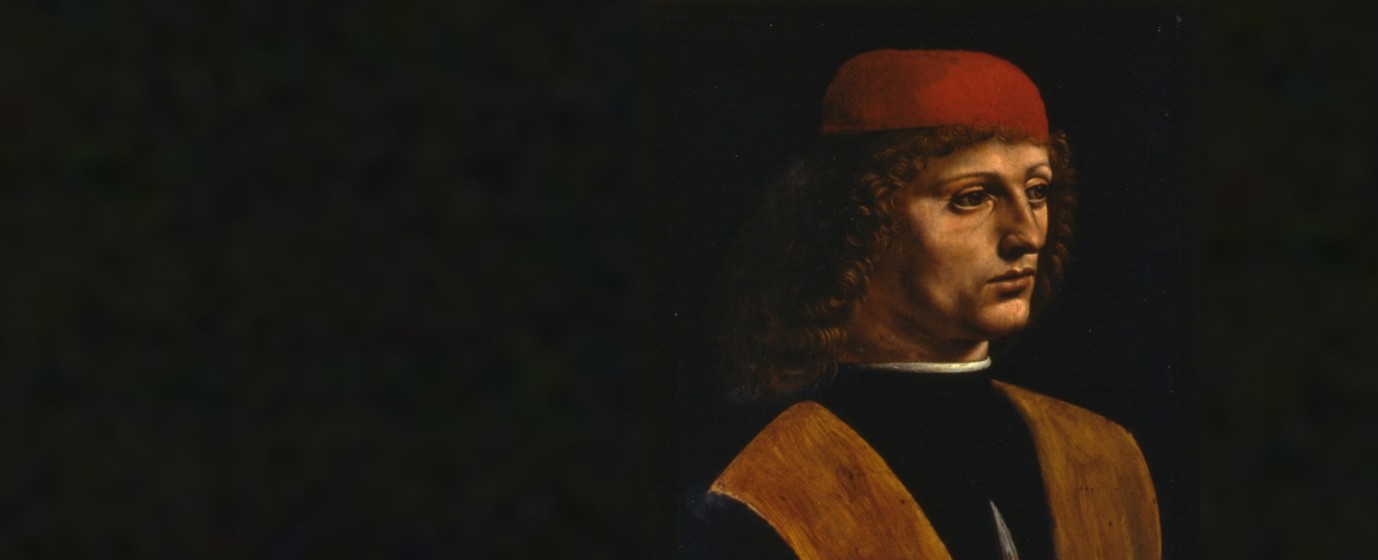
For young Leonardo, all art and knowledge were contained within the walls of an artist's workshop in Florence. At the court of the Duke of Milano, Leonardo discovered the outside world: architecture, music, and studies of nature, human physiognomy and war machines. The courtier Leonardo da Vinci encountered the talented people and intellectuals associated with the Castello Sforzesco, amid well-established traditions and innovative changes coming from the rest of Europe.
Some of the court ladies were rendered immortal in paintings, such as the Belle Ferronière and the Lady with an Ermine, alias Lucrezia Crivelli and Cecilia Gallerani respectively. At the time, these women were lovers of the Duke of Milano, and now their seductive glances are admired in paintings displayed in the museums of Paris and Krakow.
A young musician was also made eternal by Leonardo's brushes. Perhaps it was Franchino Gaffurio, choir master at the Duomo, but maybe it was Josquin Desprez, a Flemish composer. With his original pose and carefully chosen outfit, his eyes magically beckon to us to follow him. He is more real than reality, and today he is displayed among the highlights of the Pinacoteca Ambrosiana in Milano, in the illustrious company of Bruegel, Caravaggio, Tiziano and Botticelli.
Leonardo walked about the Castle with his long, thick beard. At times he was impetuous, at times lost in his own thoughts: he always carried a collection of sheets on which he randomly entered notes in pencil from right to left, drawings in ink, and sketches in charcoal.
Leonardo measured the city in arms-lengths, mapping it as the crow flies. He drew intertwined knots, and created ingenious machines to disentangle and weave them, including the fantastic flying machine that he tested on the rooftops of the current Palazzo Reale. He invented puzzles to astonish friends, and above all, he tirelessly designed all manners of things and objects, visiting building sites and artisan shops, always in contact with patrons, involved in all sorts of studies and updated on every issue of his era.
The Codex Atlanticus is a collection of 1000 of these sheets, which are in rotation displayed in the Pinacoteca Ambrosiana. This was his diary of eclectic meetings and multi-disciplinary projects, in which human anatomy is architecture and constructions are filled with life. These are the overflowing exercise books of an “Omo sanza lettere” - a man who didn't know Latin - in a Milano that always displayed its abundance of ideas in architecture, creativity and research.

 Log in
Log in
